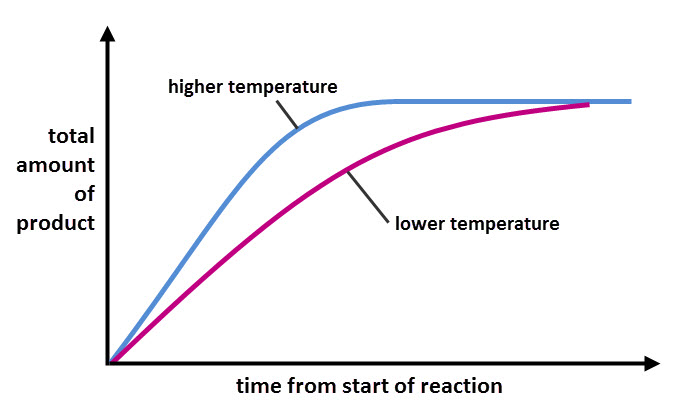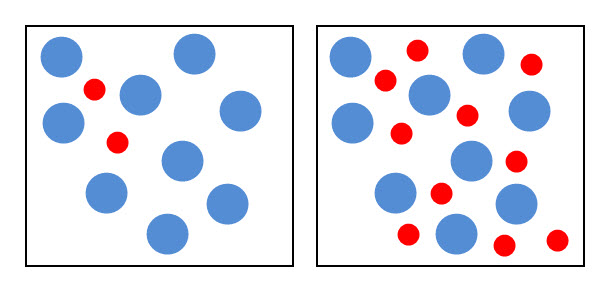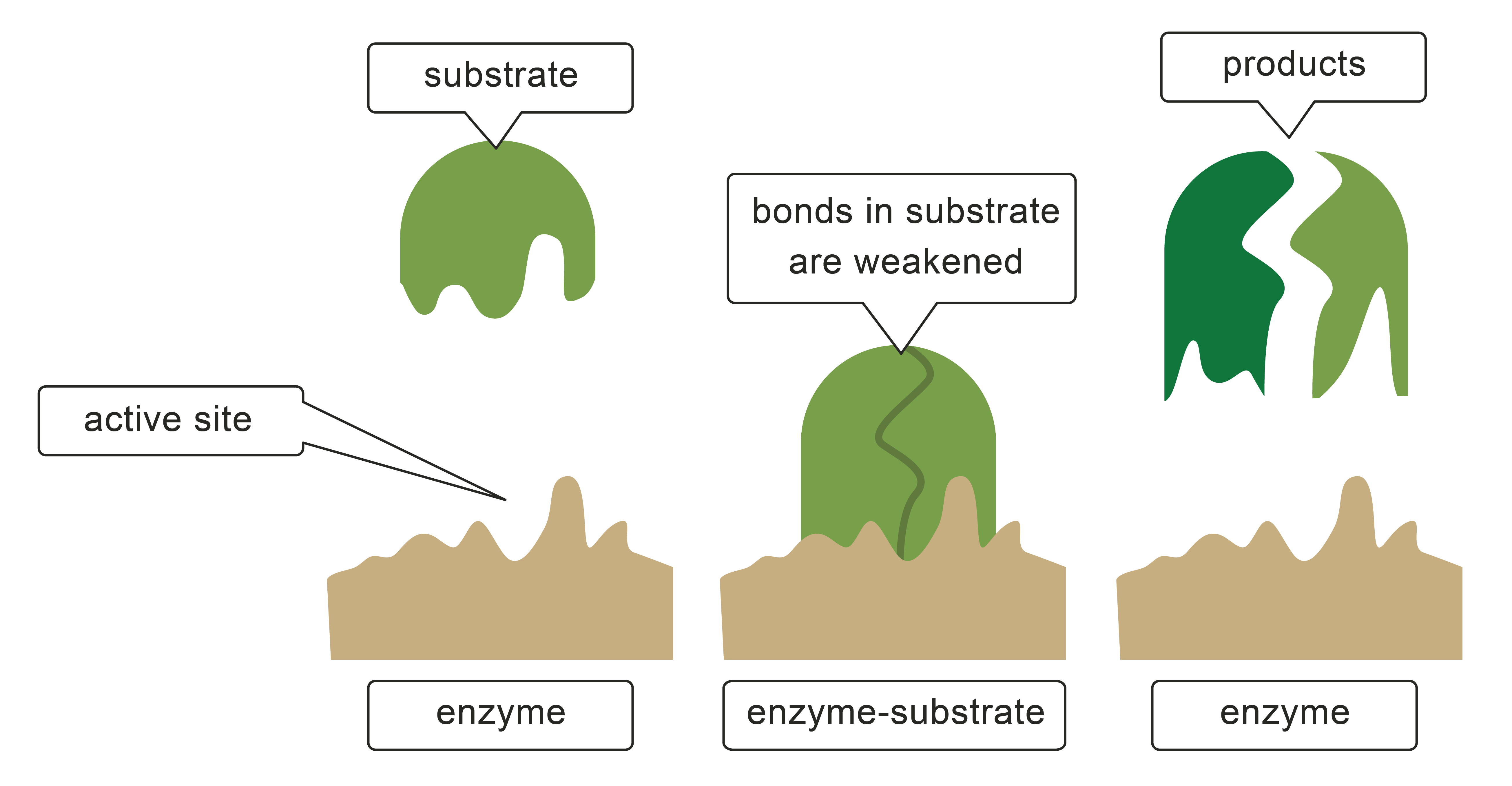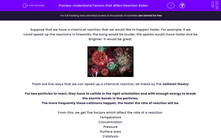Suppose that we have a chemical reaction that we would like to happen faster. For example, if we could speed up the reactions in fireworks, the bang would be louder, the sparks would move faster and be brighter. It would be great.

There are five ways that we can speed up a chemical reaction, all linked by the collision theory:
For two particles to react, they have to collide in the right orientation and with enough energy to break the atomic bonds in the particles.
The more frequently these collisions happen, the faster the rate of reaction will be.
From this, we get five factors which affect the rate of a reaction:
Temperature
Concentration
Pressure
Surface area
Catalysts
Temperature
When the temperature increases, the particles have more energy. More energy means more movement, so the frequency of collisions increases and the collisions that happen are harder - they have more energy.
Both these factors increase the rate of reaction.
The graph below shows the rate of the same reaction in different temperatures. The blue line shows the progress of the reaction at a higher temperature than the purple line. The blue line is steeper, showing that the reaction happens faster.

Concentration
If the concentration of one or more of the reactants increases, the particles become more crowded.
The diagram below shows the particles of two chemicals. The box on the right contains more red particles representing one of the chemicals about to react. This means that the concentration of the 'red' chemical is now higher, but the particles are still in the same space. This increases the probability of collisions and the rate of the reaction.

Pressure (in gases)
An increase in pressure speeds up a reaction. It has the same effect as an increase in concentration. The way you increase pressure on a gas is by squeezing it into a smaller volume, but the mass remains the same. This results in the same number of particles moving about in a smaller volume, which increases the number of collisions and the rate of the reaction.
Surface area
When a solid chemical is broken down into smaller pieces - or even a powder - there are more particles that can react, as the diagram below shows.
We say that a chemical in a powder form has more surface area than the same mass of the same chemical in a solid block form. An increased surface area allows for more collisions and the rate of the reaction increases.
One example of this is that custard powder is very explosive because the powder has very small grains.
.jpg) |
.jpg) |
Catalysts
A catalyst is a chemical that speeds up a reaction without being used in it. Catalysts are specific to reactions, so the catalyst for one reaction would not work for another. In biology, catalysts are called enzymes - it's a different name for the same idea.

If we want a reaction to go more quickly, we can try these things:
Increase the temperature.
Increase the concentration of the reactants in the solution.
Increase the pressure of the reactants, if they are a gas.
Increase the surface area, by grinding the solid into smaller pieces.
Use a catalyst (called an enzyme in biology).
If we want a reaction to go more slowly, we could try the opposite of these things.
Now let's have a go at some questions.








